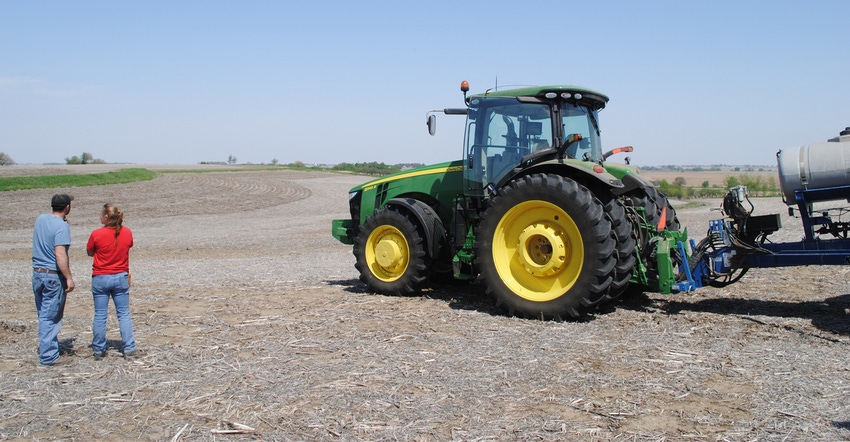
Kevin Green of Greenview Farms, his wife, Lori, and his brother, Keith, farm 14,000 acres of mostly rented land planted to a corn and soybean crop rotation in east-central Iowa.
With only six full-time employees, Greenview Farms, which is headquartered in DeWitt, Iowa, relies heavily on 10 or more seasonal part-time employees during planting and particularly during harvest season to get the job done.
With a farming operation that spreads 100 miles east to west — and 70 miles north to south — across seven counties, finding and keeping quality and reliable part-time employees every year is a crucial component to the farm’s success, Green says.
Over 40 years in operation, the farm has developed an employee strategy that has worked, even in the challenging and long harvest season of 2019. “We work very hard to keep our employees happy on the job,” Green explains. “We want them to enjoy coming to work for us.”
Their returning part-time employees often are retired manufacturing workers or farmers, or other local folks who come recommended for their work and have more flexible schedules in their lives. When starting out, employees are trained by other employees and are not left to a job by themselves until they are comfortable with the tasks at hand.
“We never ask them to do any tasks they are uncomfortable with,” Green says. “We make sure the employees are properly trained, but we don’t ask them to go solo until they are ready.”
Having reliable and quality full-time help to conduct training makes it easier for part-time employees learning to drive a tractor and grain cart, doing tillage operations, or driving a fuel trailer or seed tender, for instance.
The harvest crews travel together in Greenview Farms vehicles to the field each morning. Most of the time, they all leave the home shop together, or in waves. With retired workers as an important component to the part-time workforce, there are requests for time off on certain days for appointments, during hunting season or to watch grandchildren play ball or for other activities, Green adds.
“That’s why we try to have a large pool of employees to fill in needed field positions,” he says. “We figure it out to make it work for them to do those things, no matter what.” Many of the employees are now coordinating time off between themselves, so Green doesn’t have to worry as much about it.
“During harvest, our combine operators are mainly the same every day,” Green says. “We use part-time employees on the weekends, but they may be different part-time employees who have full-time jobs during the week. And we have a few of the employees who are more flexible with their hours, which helps out.”
Communication with employees also is important each day, Green says. “If weather is going to be a problem for harvest, we will text them about it early in the morning,” he says. “Also, wherever we are working, we will text out the menu for a café in the closest town for that day, and they can pick whatever they want off the menu for lunch. We pick up the meals and deliver them to the employees in the field every day. At that time, we take the time to listen to our employees and find out how things are going in the field and see how they are doing.”
In many ways, returning part-time employees become like family for Greenview Farms. “At the end of the harvest season, we host a harvest party for all of our employees and their families,” Green says. “We encourage them to take photos out in the field every day, then we take those photos and make a slideshow of them for their family members to enjoy during the harvest party.”
Spouses, children and grandchildren enjoy seeing both male and female employees out in the field and working, so it connects the families of employees to what they are doing on the farm each harvest season, Green explains.
He says that the party and the extra touches they provide for their employees are expenses for the farm, but Green feels that they are repaid many times over with high-quality, returning employees who care about the operation and take great pride in their work.
Learn more about Greenview Farms online at greenview-farms.com.
About the Author(s)
You May Also Like






